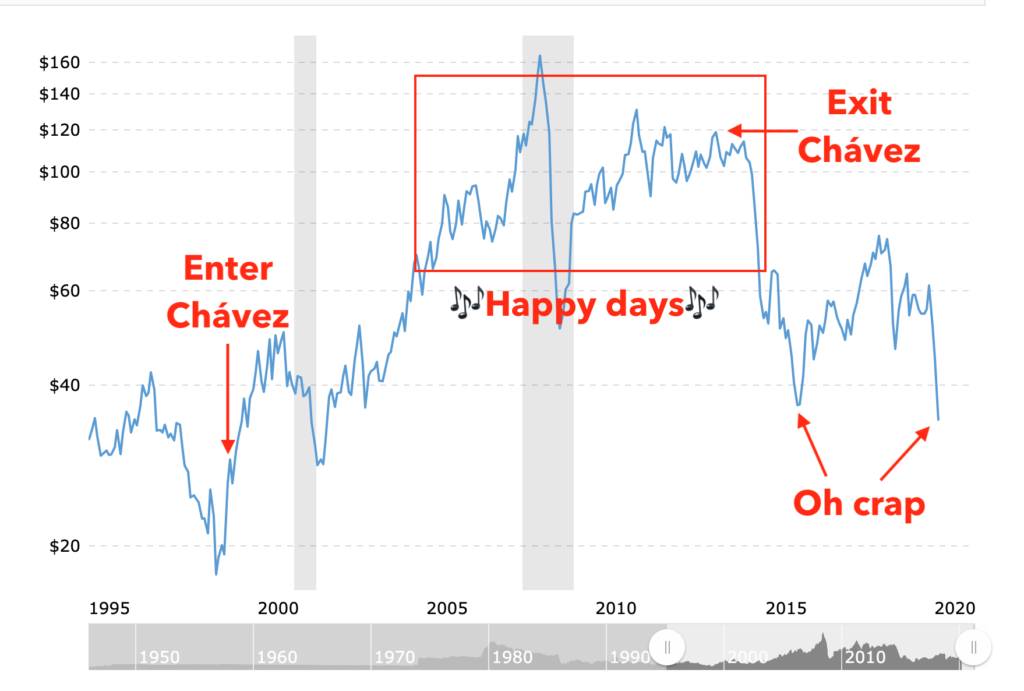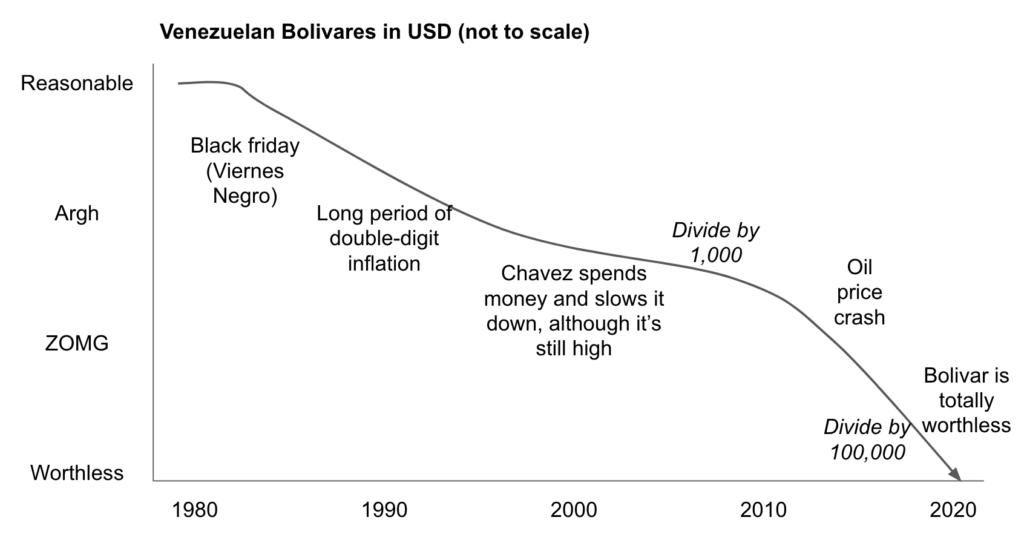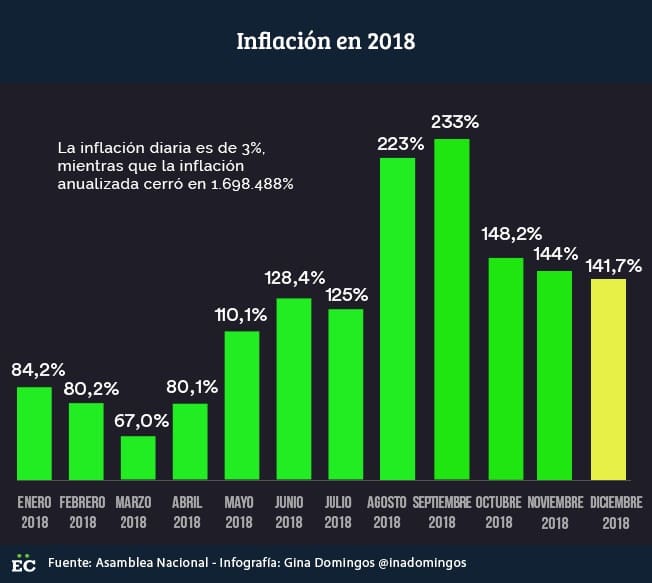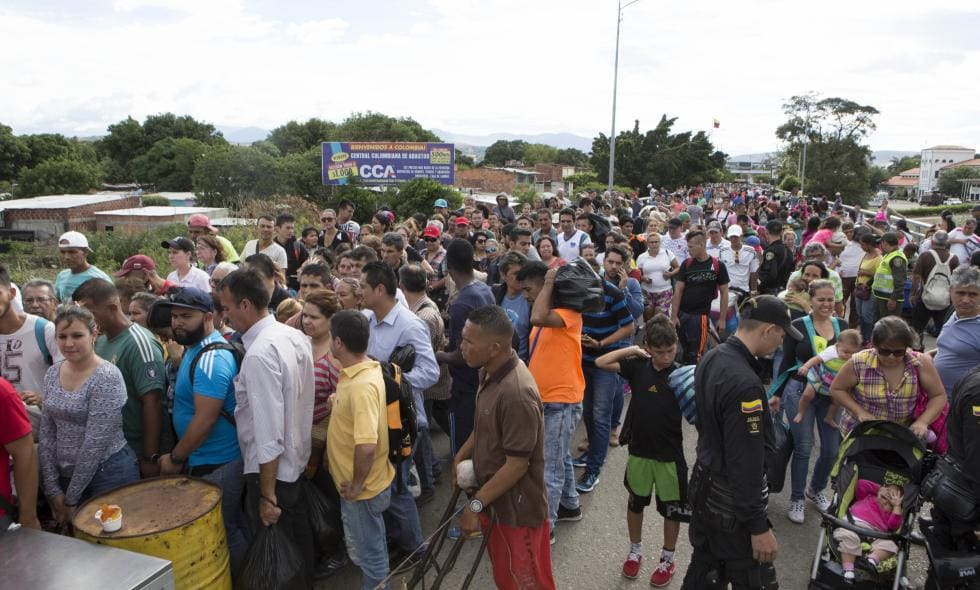The Colombian/Venezuelan Crisis Explained Simply
Before arriving in Colombia in early 2020, we had heard of the “Venezuelan Crisis”. But we didn’t know how bad it was.
As a very recent indication of just how much the Venezuelan crisis is affecting people’s lives, the IMF denied Venezuela $5B worth of funding to handle the 2020 crisis, indirectly mentioning the political leadership crisis as one of the reasons.
Among many things, this implies the IMF doesn’t believe that money will actually end up helping Venezuelans. The reason matters less: the result is that many thousands will die, and many more will be driven even further into poverty.
Most people with functioning synapses will have heard the name Hugo Chávez and be vaguely aware that Venezuela is going through a rough time. This is where we were when we got to Colombia.
But in Colombia, we came face-to-face with how serious of a problem the Venezuelan crisis is, and how millions of people are in poverty and getting out of a completely destroyed Venezuela by any means possible — many dying along the dangerous route over the mountains.

We’d meet Venezuelans on the street asking us for money extremely politely and eloquently, asking us to change worthless Venezuelan currency for anything, striking up conversation with us, and even commenting to me that they, too, had Iranian friends.
Who were these people? we wondered.
Wondering how this — of many crises happening around the world (Syria/European refugees, the Kurds, the Uyghurs, Afghans… exhausted yet? Because there’s more) — had escaped our immediate attention, we decided to try to understand it more.
Here’s what we learned about the Venezuelan crisis in brief.
Contents
So What Happened in Venezuela?
So basically, Chávez (I hope you recognise the effort it takes to type á… every time, I have to hold down the “a” key) was elected in 1998 and he said “I want to get rid of poverty and give money and power back to the people”.
Venezuela has a lot of oil. So, coupled with high oil prices in the early 2000s, it also had a ton of cash. Great! Chávez started nationalising industries and superficially battling big corporates and creating public services for the poor. He also profited along the way, but nobody minded so much at the time.
The working class of Venezuela LOVED Chávez. There were good — if superficial — reasons to do so. Firstly, he was charismatic. But also, during Chávez’s term from 1999 to 2013, poverty and unemployment roughly halved (from high levels) and inflation, which was over 100% annually just before Chávez, dropped to its lowest levels since the 1980s.
But while he was popular, Chávez didn’t play clean. Once he got into power, he stayed on the side of people, but worked to increase his grip on the country.
Chávez replaced the existing Congress with a new National Assembly, which he controlled. He used his pet National Assembly to rewrite the constitution to perpetuate his power, extending electoral periods for the president and other officials, and making re-elections unlimited. He made appointments to bring both the supreme court and the military under his control.
Even though Chávez won most of the elections and referendums (13 out of 14), he used dirty money to win them.
The thing is, Chávez could spend money. And people liked that (mostly). But he didn’t change how Venezuela made money — that was always oil.
Then Chávez died in 2013, and Venezuela was no longer his problem, and then in 2014 the oil price collapsed.

Before he died, Chávez appointed control to his successor, Nicolás Maduro, who won the following election (barely)… but elections no longer mattered, anyway.
Maduro took centralisation of power to the next level. When the opposition won the National Assembly in 2016, Maduro just made a new one called the National Constituent Assembly to supplant it. Maduro was then re-elected in 2018, but everyone knew it was rigged, with people saying that Maduro would beat Jesus.
Maduro’s brutal, too. In his time, Maduro has murdered thousands of members of the public in extra-judicial killings and oppressed the state media, even opening fire on demonstrators.
And then in 2018 the leader of the National Assembly, Juan Guaidó, said “I don’t even believe that there’s a legitimate president” and declared himself to be one in accordance with the constitution. More than 50 other countries support him, including the US and most developed countries, but Maduro is still there!
The result? Nobody really is sure who’s in charge, and the whole country has been especially unstable since early 2018.
The Venezuelan Bolivar is now worthless
People hold up bunches of Bolivares and say “This won’t even buy you one arepa”.
It’s actually impossible to even show on a sensible chart how worthless the Bolívar is. This is the best I can do, pictorially:

The reason it’s impossible to show Venezuelan Bolívar’s deflation on a chart is that the currency been massively replaced twice (the Bolivar Fuerte replacing the Bolivar by 1,000:1 in 2008, then the Bolivar Soberano replacing the Fuerte by 100,000:1 in 2018), due to massive, non-stop inflation since the early 1980s.
Venezuelan inflation wasn’t just “double digits” in recent years. They’d WISH for double digits again, like in Chavez days. No, inflation in 2018 was an unimaginable over one million percent in 2018 — and with worse to come, according to IMF estimates.
Here’s inflation just in 2018:

In Venezuela, nobody even uses the Bolívar any more. That’s if they even have any. The only currency that’s worth anything is the US Dollar, and that’s what people insist to be paid in (if at all).
Basically, Venezuela, in a nutshell, is like this. Imagine if someone said to you:
- “You didn’t vote? Hah, nobody did. Anyway, that guy who controls everything is still your president. Don’t act surprised.”
- “Also don’t talk about it or they’ll kill you.”
- “Your money is worth less than toilet paper, because your money is too dirty to wipe your bottom with.”
- “It’s going to get worse, because for as long as you remember, it has always gotten worse.”
This is why people are leaving Venezuela — fleeing a crisis with no end in sight. Anywhere is better. Especially Colombia, to which over 4,000 Venezuelans cross the border a day.

How Venezuelan Refugees Affect Colombia
Colombia initially welcomed refugees with open arms. But now there are a lot of them and people aren’t so sure.
Colombians more than almost anyone else in Latin America remember what it’s like — very recently — to be the ones fleeing hard times.
In fact, over two million Colombian had left Colombia for Venezuela over the past two decades to escape the violence of guerilla warfare with the FARC, the revolutionary paramilitary with which Colombia struck an accord in 2016.
Those who still lived in Colombia often went to work in Venezuela during the oil boom of the 2000s — particularly those on the border towns.
Now, the tide of human traffic has turned. Those Colombians that fled are coming back, often with mixed families and identities.
On top of that, Venezuelans are escaping. So far roughly four million Venezuelans have left Venezuela for other countries, with nearly half of those staying in Colombia (many pass through and go to other countries like Ecuador, Peru, or Chile).
People in Colombia remember what it was like to live in a bad situation. Everyone from the people living in frontier towns to the President calls them “our brothers and sisters the Venezuelans.”
Hospitals give free service to Venezuelans. People in restaurants share their food — I’ve seen it (and I’ve been asked, and while I was confused the first time, I was happy to do it the second time).
But as the number of migrants increased, services have become to be overloaded. Venezuelans are still welcome, but locals are getting grumpy that hospitals are always full, and crime is on the increase.
One of our Spanish tutors from the city of Cúcuta on the border told me that most Venezuelans are nice and friendly. But they’re also desperate, she said. And with desperation comes a few bad apples willing to do anything to survive. So her town no longer feels safe at night time. She’s not alone — others from her Cúcuta feel the same.
For now, Colombia is the only country still welcoming Venezuelans, from a mixture of fraternity, plus practicality — it’d be hard to close the border, and the leadership knows immigration will eventually be good for the economy.
The problem is that it’s expensive. And even though the Venezuelan refugee crisis is the same size as the Syrian one (with refugees fleeing for Europe), it has received about one-twelfth the funding per refugee.
The UN High Commissioner for Refugees, Filippo Grandi, has called the poor funding of the Venezuelan crisis “one of the most underfunded humanitarian appeals in the world for one of the biggest crises”.
What can we do to help the Venezuelan crisis?
There are very few organisations that seem to be accepting donations from people abroad. I tried Googling and asking around and only found one organisation: Somos Panas Colombia, whose goal is to reduce xenophobia and promote acceptance of Venezuelan refugees.
Aside from that, the humanitarian appeal is on the international level.
We’re on the lookout for more on-the-ground support organisations in fields like healthcare, education, and other rights for Venezuelan refugees in Latin America, so if you have any leads, let us know.






